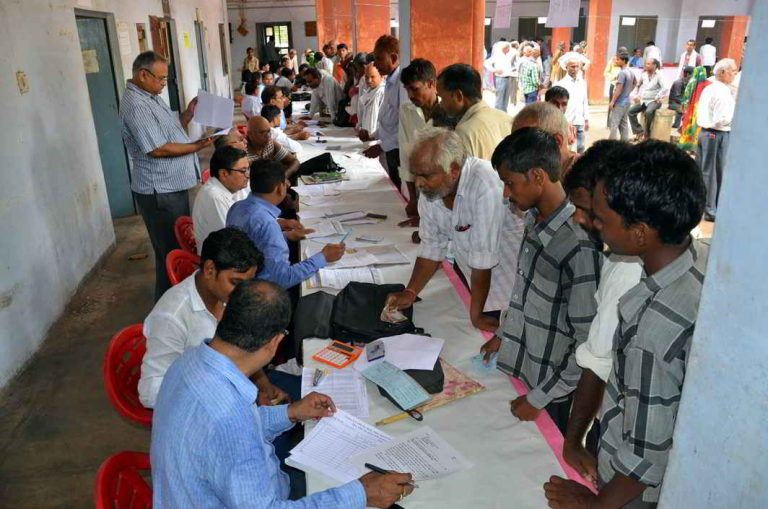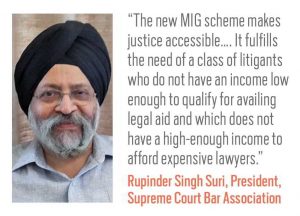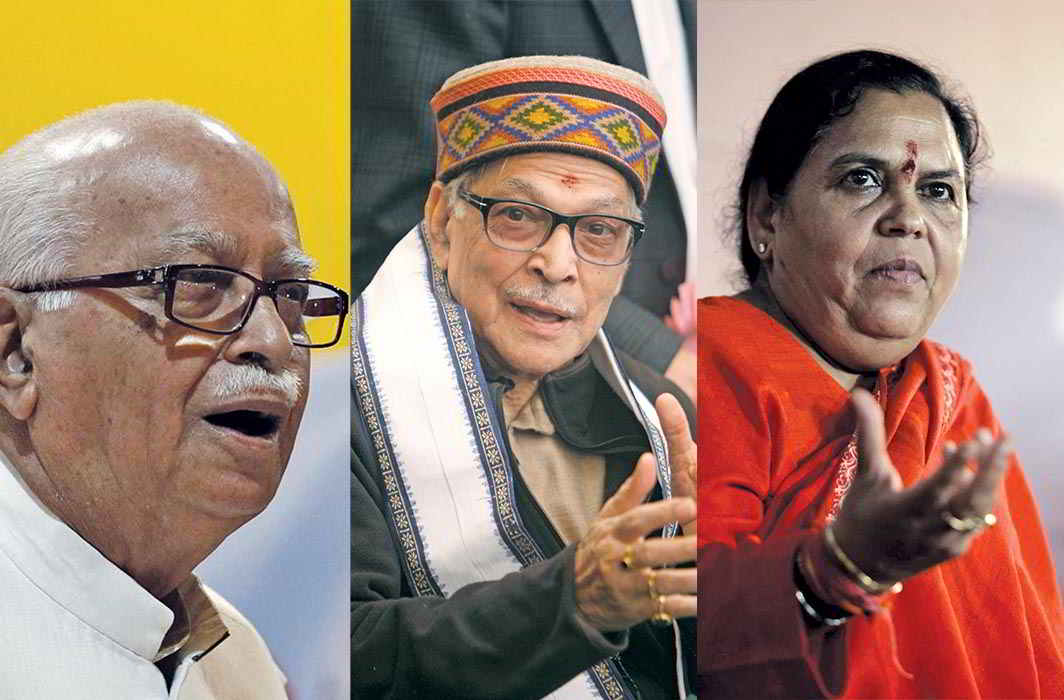
In a move to help the middle class, the apex court has started a mechanism whereby it can use the services of experienced lawyers at a nominal cost, eventually leading to a reduction in pendency of cases
~By Rakesh Bhatnagar
An attempt by the Supreme Court to make legal assistance available to litigants who aren’t marginalised or extremely poor is being seen as a move to fill in significant gaps in justice delivery at the highest forum of dispensation.
The “Middle Income Group Legal Aid Scheme” is not new but it’s been given an interesting packaging to attract a large number of litigants who fall in the 10 percent income tax slab, i.e., those who earn up to Rs 7.50 lakh annually, an amount which won’t empower them to knock at the door of the Supreme Court for disposal of long-standing litigation.
Chief Justice JS Khehar is the patron-in-chief of the scheme, while Judge Dipak Misra is president. Attorney-General Mukul Rohatgi is the ex-officio president and Solicitor General Ranjit Kumar will be its honorary secretary. It will also have a team of 13 senior lawyers. The scheme is being incorporated under the Societies Act.
” font_container=”tag:p|font_size:20px|text_align:left|color:%23000000″ google_fonts=”font_family:Open%20Sans%3A300%2C300italic%2Cregular%2Citalic%2C600%2C600italic%2C700%2C700italic%2C800%2C800italic|font_style:700%20bold%20regular%3A700%3Anormal”]
Lawyer R Venkataramani, who is also a member of the Scheme, said that in the past, the legal assistance programme could not attract needy litigants. A fresh attempt is now being made to reach out to them so that their litigations could be contested by experienced lawyers at a nominal cost, which is far below the prevailing fee in the Supreme Court and elsewhere.
Every person who desires to avail of the services of an advocate empanelled under the Scheme will have to approach its secretary by filing an application in a prescribed form along with the relevant documents. Once the papers are received, they will be assigned to the Advocate-on-Record (AoR) of the choice indicated by the applicant. In case that AoR “opines that this is not a fit case” for moving in the Supreme Court, the applicant will not be entitled to the benefit of the Scheme. This rejection costs Rs 750. In case, the AoR finds it worth approaching the top court, the Middle Income Group Legal Aid Society will certify that the applicant is entitled to legal aid.
 The Scheme offers an opportunity to a litigant to seek the first opinion by an AoR on the merit of the evidence and the possibility of its acceptance by the Supreme Court. However, if the AoR is not in favour of filing an appeal (special leave petition) before the Supreme Court, the litigant can still pursue the matter independently with lawyers who aren’t associated with the Scheme. By a rough estimate, it will cost a maximum of Rs 52,000 for filing the lawsuit and contesting it before the apex court, provided the trial is concluded within three hearings.
The Scheme offers an opportunity to a litigant to seek the first opinion by an AoR on the merit of the evidence and the possibility of its acceptance by the Supreme Court. However, if the AoR is not in favour of filing an appeal (special leave petition) before the Supreme Court, the litigant can still pursue the matter independently with lawyers who aren’t associated with the Scheme. By a rough estimate, it will cost a maximum of Rs 52,000 for filing the lawsuit and contesting it before the apex court, provided the trial is concluded within three hearings.
” font_container=”tag:p|font_size:20px|text_align:left|color:%23000000″ google_fonts=”font_family:Open%20Sans%3A300%2C300italic%2Cregular%2Citalic%2C600%2C600italic%2C700%2C700italic%2C800%2C800italic|font_style:700%20bold%20regular%3A700%3Anormal”]
Pendency of cases has plagued our courts for decades and if this move will reduce the backlog, it is a welcome step. Just take the Supreme Court’s order on March 5 relating to the case of BJP leaders LK Advani, Murli Manohar Joshi and Uma Bharti in the Babri Masjid demolition on December 6, 1992. The apex court observed that “prima facie” the order exonerating them was not correct. After 25 years, the apex court found fault with the proceedings by trial courts, which means the matter would be argued afresh.

The MIG scheme is in addition to the free legal aid scheme for the poor. This is ostensibly to soften the damage done to the middle class, the worst victims of Prime Minister Narendra Modi’s demonetisation. Though the free legal aid mechanism for the poor was set up under the National Legal Service Authority and has served the purpose for which it was constituted, the MIG scheme will have to evolve a system whereby a nominal fee will be paid by the litigant to AoR and a senior lawyer so as to retain their interest in the case.
” font_container=”tag:p|font_size:20px|text_align:left|color:%23000000″ google_fonts=”font_family:Open%20Sans%3A300%2C300italic%2Cregular%2Citalic%2C600%2C600italic%2C700%2C700italic%2C800%2C800italic|font_style:700%20bold%20regular%3A700%3Anormal”]
If the mammoth backlog of cases, mounting vacancies of judges and poor infrastructure are prime reasons for the pathetic state of the judiciary, ever-increasing lawyers’ fees have only added to the woes of litigants.
Venkataramani said: “The deficiency in demand and supply of legal services will always be a challenge. Dealing with all factors as they arise demands vision and unfailing commitment. The MIG idea is to fill up gaps and ensure that reaching out to competent lawyers is made easy and over a period of time, to draw good talent to work beyond mercenary considerations.”
President of the Supreme Court Bar Association Rupinder Singh Suri said: “The new MIG scheme makes justice accessible. Justice has become so prohibitively expensive that middle and lower middle class people are deprived of quality legal assistance. This is a self-sustaining scheme and fulfils the need of a class of litigants who do not have an income low enough to qualify for availing legal aid and which do not have a high-enough income to afford expensive lawyers.”

